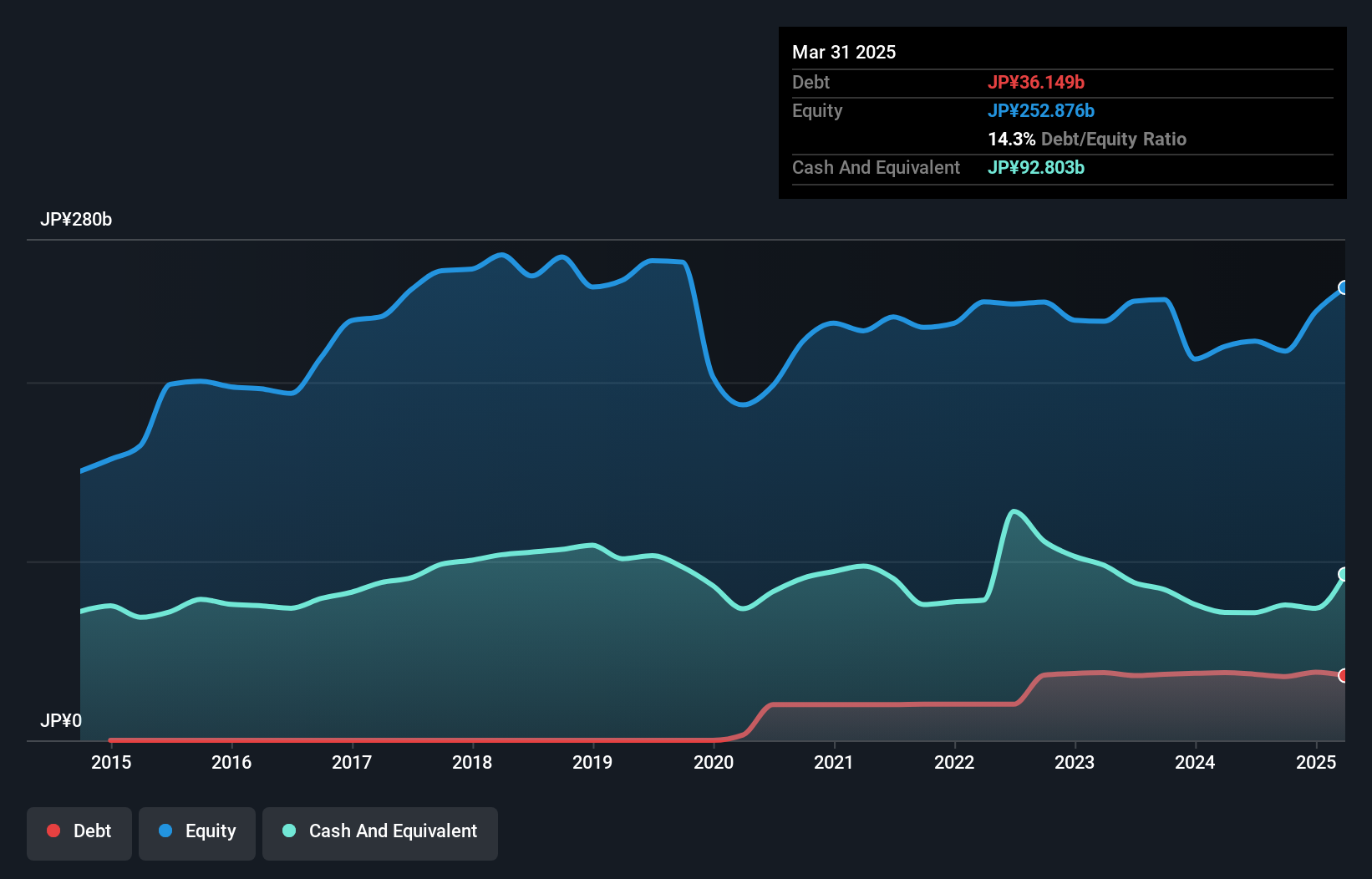- Japan
- /
- Entertainment
- /
- TSE:2432
These 4 Measures Indicate That DeNA (TSE:2432) Is Using Debt Reasonably Well
Legendary fund manager Li Lu (who Charlie Munger backed) once said, 'The biggest investment risk is not the volatility of prices, but whether you will suffer a permanent loss of capital.' So it might be obvious that you need to consider debt, when you think about how risky any given stock is, because too much debt can sink a company. We can see that DeNA Co., Ltd. (TSE:2432) does use debt in its business. But the real question is whether this debt is making the company risky.
What Risk Does Debt Bring?
Debt and other liabilities become risky for a business when it cannot easily fulfill those obligations, either with free cash flow or by raising capital at an attractive price. Ultimately, if the company can't fulfill its legal obligations to repay debt, shareholders could walk away with nothing. However, a more frequent (but still costly) occurrence is where a company must issue shares at bargain-basement prices, permanently diluting shareholders, just to shore up its balance sheet. Of course, the upside of debt is that it often represents cheap capital, especially when it replaces dilution in a company with the ability to reinvest at high rates of return. The first step when considering a company's debt levels is to consider its cash and debt together.
How Much Debt Does DeNA Carry?
You can click the graphic below for the historical numbers, but it shows that DeNA had JP¥36.1b of debt in March 2025, down from JP¥37.8b, one year before. But it also has JP¥92.8b in cash to offset that, meaning it has JP¥56.7b net cash.

How Strong Is DeNA's Balance Sheet?
The latest balance sheet data shows that DeNA had liabilities of JP¥88.8b due within a year, and liabilities of JP¥52.5b falling due after that. On the other hand, it had cash of JP¥92.8b and JP¥45.1b worth of receivables due within a year. So its liabilities outweigh the sum of its cash and (near-term) receivables by JP¥3.37b.
This state of affairs indicates that DeNA's balance sheet looks quite solid, as its total liabilities are just about equal to its liquid assets. So it's very unlikely that the JP¥273.0b company is short on cash, but still worth keeping an eye on the balance sheet. Despite its noteworthy liabilities, DeNA boasts net cash, so it's fair to say it does not have a heavy debt load!
Check out our latest analysis for DeNA
Better yet, DeNA grew its EBIT by 4,959% last year, which is an impressive improvement. That boost will make it even easier to pay down debt going forward. The balance sheet is clearly the area to focus on when you are analysing debt. But it is future earnings, more than anything, that will determine DeNA's ability to maintain a healthy balance sheet going forward. So if you're focused on the future you can check out this free report showing analyst profit forecasts.
Finally, a business needs free cash flow to pay off debt; accounting profits just don't cut it. While DeNA has net cash on its balance sheet, it's still worth taking a look at its ability to convert earnings before interest and tax (EBIT) to free cash flow, to help us understand how quickly it is building (or eroding) that cash balance. In the last three years, DeNA's free cash flow amounted to 27% of its EBIT, less than we'd expect. That weak cash conversion makes it more difficult to handle indebtedness.
Summing Up
We could understand if investors are concerned about DeNA's liabilities, but we can be reassured by the fact it has has net cash of JP¥56.7b. And we liked the look of last year's 4,959% year-on-year EBIT growth. So we don't think DeNA's use of debt is risky. When analysing debt levels, the balance sheet is the obvious place to start. However, not all investment risk resides within the balance sheet - far from it. For example - DeNA has 1 warning sign we think you should be aware of.
Of course, if you're the type of investor who prefers buying stocks without the burden of debt, then don't hesitate to discover our exclusive list of net cash growth stocks, today.
New: Manage All Your Stock Portfolios in One Place
We've created the ultimate portfolio companion for stock investors, and it's free.
• Connect an unlimited number of Portfolios and see your total in one currency
• Be alerted to new Warning Signs or Risks via email or mobile
• Track the Fair Value of your stocks
Have feedback on this article? Concerned about the content? Get in touch with us directly. Alternatively, email editorial-team (at) simplywallst.com.
This article by Simply Wall St is general in nature. We provide commentary based on historical data and analyst forecasts only using an unbiased methodology and our articles are not intended to be financial advice. It does not constitute a recommendation to buy or sell any stock, and does not take account of your objectives, or your financial situation. We aim to bring you long-term focused analysis driven by fundamental data. Note that our analysis may not factor in the latest price-sensitive company announcements or qualitative material. Simply Wall St has no position in any stocks mentioned.
About TSE:2432
Excellent balance sheet and fair value.
Similar Companies
Market Insights
Community Narratives



